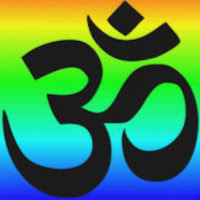DDV2
Blue, yellow, physical, subtle, short, long, and other such differences, forms are various and many. But the eye sees them all remaining as one and the same.
~A
Nīla-pīta-sthūla-sūkṣma-hrasva-dīrghādi bhedataḥ, nānāvidhāni rūpāṇi paśyellocanam-ekadhā.
नील-पीत-स्थूल-सूक्ष्म-ह्रस्व-दीर्घ-आदि – blue, yellow, gross, subtle, short, long etc.; भेदतः – differences; नानाविधानि – many and varied; रूपाणि – forms; पश्येत् – sees; लोचनम् – the eye; एकधा – remaining the same
The forms are many and varied on account of differences like blue, yellow, gross, subtle, short, long, etc. The eye remaining the same sees (them) all.
~T
नीलपीतस्थूलसूक्ष्मह्रस्वदीर्घादिभेदत: on account of such distinctions as blue, yellow, gross, subtle, short, long, etc. नानाविधानि various रूपाणि forms लोचनं the eye एकधा as one पश्येत् perceives.
The forms (objects of perception) appear as various on account of such distinctions as blue, yellow, gross, subtle, short, long, etc. The eye, on the other hand, sees them, itself remaining one and the same.
~N
Like blue, yellow, gross, subtle,
short, long, etc – on account of these differences
the forms are many and varied.
The eye remaining the same sees them all.
~S
Notes:
The forms, etc., are objects of perception which are varying. That which is constant and changeless is the perceiver. The different objects appear, no doubt, as distinct from one another. But they are perceived with their changes, because the eye, as perceiver, is a unity. They all belong to one category, namely, दृश्य or the seen. With reference to the objects, the eye is the perceiver.
~N
The eye Is unaffected by what it perceives. It remains untainted and untinted by the qualities and hues it sees in objects. It does not become red on seeing blood or round on seeing a ball. It maintains its own nature despite the differences it sees in objects. Thus the Seer is unaffected by the seen.
~T
The first quarter of the previous verse is explained now. The author says that the observed objects are many and the observing eye is only one. To see the green color one uses the same eye that would be used to see the red color. This shows that there is plurality in the dṛśyam and there is non-duality in the dṛk.
~P
Therefore, ekadhā paśyet; this ekadhā is very important. Ekadhā sat locanam paśyet, eyes remaining the same one sees different objects. So, nānā-vidhāni rūpāṇi paśyet locanam ekadhā. Therefore, understand that there is only one dṛk, remaining the same.
~D
On Drg Drsya Viveka 2: The Seeing
Objects in the world vary but different eyes aren’t required to see various objects.
Objects in the world transform every second but my eyes aren’t changed by what they see.
Objects in the world are seen as countless yet my eyes are but one seer.
Thus Brahman is formless, changeless, and nondual.
~A
Translators / Commentators Legend
A: Aumdada
D: Dayananda
N: Nikhilananda
P: Paramarthananda
S: Sandeepany
T: Tejomayananda









